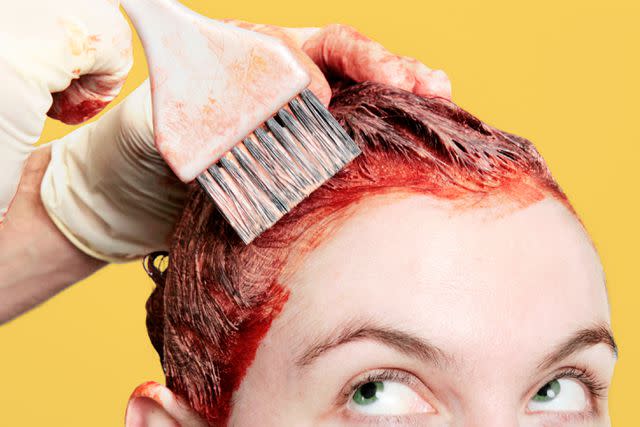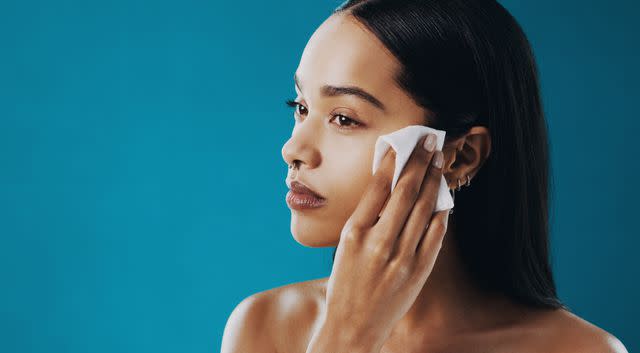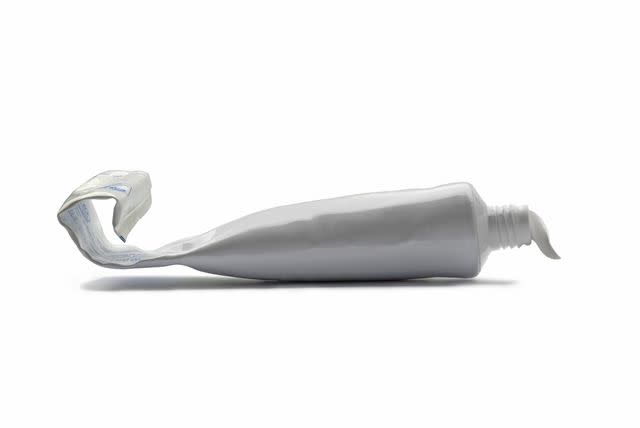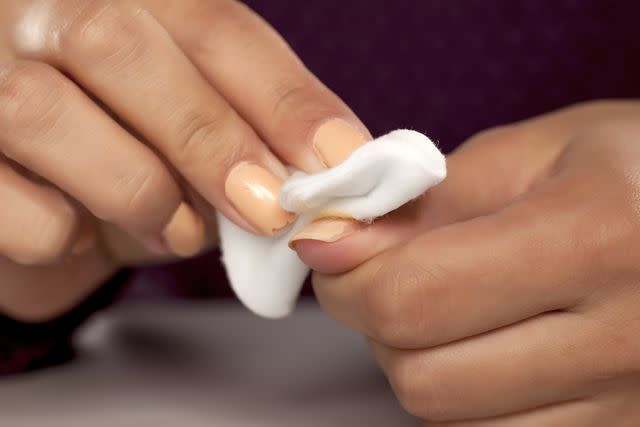How To Get Hair Dye Off Skin Quickly And Safely
If you accidentally spilled dye onto your skin while dying your hair, don't panic. Here's an easy guide on quickly and safely removing it.
At-home hair coloring has its perks, but it also has its pitfalls. Often this pitfall includes accidentally spilling hair dye onto your skin. Staining is a minor setback and certainly no cause for alarm. We're breaking down how to remove hair dye from your skin with a few quick and easy tips that will erase any signs of your at-home dye job. Before we get ahead of ourselves, there are plenty of times we've walked out of the salon with a hint of dye around our hairline, so you might need a few tips on how to get hair dye off skin too. Here is a guide to safe, quick, and straightforward practices to help eliminate any signs of a stain so you can feel fabulous about your new hair.
Related: The 10 Best Temporary Hair Coloring Products That Require Zero Commitment
Use Petroleum Jelly To Prevent Stains

powerofforever/Getty Images
Consider Vaseline the trick to avoiding hair-dyed skin altogether. Swipe on a bit around your hairline before coloring your hair. The petroleum jelly will act as a barrier for the skin, ensuring that dye doesn't seep in unexpectedly. Apply it however you like. Just be mindful to avoid anywhere you want the dye to stick (your hair, for instance).
Try Makeup Remover

Courtesy of Getty
If you're looking to start with the least-abrasive solution for how to take hair dye off your skin, this is it. Makeup remover, designed for facial use, is a safe bet that it won't irritate the delicate area. Use whatever variety of makeup remover you have on hand, whether wipes, cleansing water, or an oil-based version. Use it just as you would if removing makeup, gently wiping away the residue. If this doesn't work, it might be time to try a more powerful option.
Use Toothpaste With Baking Soda

Our next trick for how to get hair dye off your skin uses toothpaste, but not the gel variety. We learned how to use toothpaste to whiten your nails, but now we're using it to remove hair dye from your skin, thanks to one hardworking ingredient: baking soda. Rub a little toothpaste on the dyed area with your finger. You can also boost it by rubbing gently with a washcloth or soft-bristled toothbrush. When you remove the toothpaste, you should find the dye lifted off with it.
Try Rubbing Alcohol
If gentler cleansers don't work, you can try rubbing alcohol. Rubbing alcohol is drying to the skin, so don't scrub hard when using it. Dampen a cotton ball and gently rub areas with stubborn stains. And of course, keep rubbing alcohol far away from sensitive areas like the eyes.
Use Nail Polish Remover On Hands

VladimirFLoyd / Getty Images
If you have dye on your hands, give this one a try. Some sources say you can also use this method on your face, but there are a few things to remember. First, nail polish remover can be a major skin irritant, so apply it to a small area using a cotton ball. Watch for a second for any signs of reaction before applying to a larger area. When using this method, you'll want to ensure you work quickly. The polish remover should be on your skin for no longer than a minute. Be sure to avoid the eye area entirely and wash thoroughly to erase all traces of nail polish remover.
Use Hair Dye

Hair dye can be reactivated with more hair dye and can clean up unwanted hair dye on your skin. To try it, use a gloved hand to apply a bit of leftover hair dye to the stained areas of your skin. Rub it in, then gently wipe it away with warm water and soap.
If you ask a handful of women, "how do you get hair dye off your skin," they would reply with a handful of answers. While no method is suitable for everyone, the suggestions above are a good start.
For more Southern Living news, make sure to sign up for our newsletter!
Read the original article on Southern Living.

